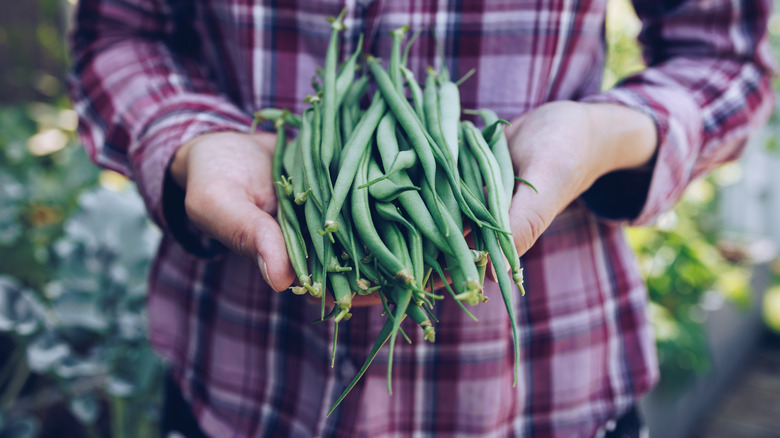Why Growing Green Beans From Seed Instead Of A Seedling Is The Best Method
Vegetables like tomatoes, peppers, and broccoli thrive as transplanted seedlings in the garden. They benefit from the extra time germinating indoors before the frost thaws in cold climates. But don't make the mistake of germinating green beans (Phaseolus vulgaris) inside. Green beans don't like being moved.
This fantastic addition to vegetable gardens is best started from seed and not a seedling in the flowerbed. Seedlings give a lot of plants more time to grow inside while it's still cold outside, which helps you get a jump start for the growing season. But green beans grow very quickly, so they don't need as long to flower and fruit. When you're talking about the life cycle of the green bean plant, the bean pods usually appear about 45 to 60 days after planting, which is a pretty quick turnaround. Your average tomato plant can take up to 90 days to mature.
Green beans have delicate and fragile roots, so if you try to grow them from seedlings and not seeds, you may damage the roots in the process. Transplanted seedlings are more likely to whither and die as a result. The safest bet is to plant your green bean seeds directly in the ground and let them germinate there. In the same vein, don't add trellises or green bean poles after they take root. Do it before they germinate, so you leave their roots alone.
How to grow healthy green beans from seed
When preparing to plant your green beans, first figure out whether you want to grow pole beans, which typically require a trellis or support (hence the name) – they can grow as tall as 15 feet! Bush beans, however, only grow about 2 feet tall. Both prefer seeds planted directly in the ground, typically in slightly acidic soil.
Make sure to plant your green bean seeds after the last frost because they won't like a shock of cold. They also need at least 6 hours of sunlight a day. Before you plant pole beans or bush bean seeds, soak them in warm, filtered water for a few hours or overnight to help the beans sprout. Then, when you're ready, plant them an inch deep in the garden.
Green beans are thirsty, so be sure to water them weekly — about two inches of water per square foot. Feel free to weed around them, but keep in mind their fragile roots. The green bean roots can be damaged if you pull nearby, entangled weeds too aggressively. Once you have small plants, you may need to protect them from pests like spider mites, leaf beetles, or even hungry caterpillars. You can learn how to identify a caterpillar on a green bean plant in a few easy steps.

